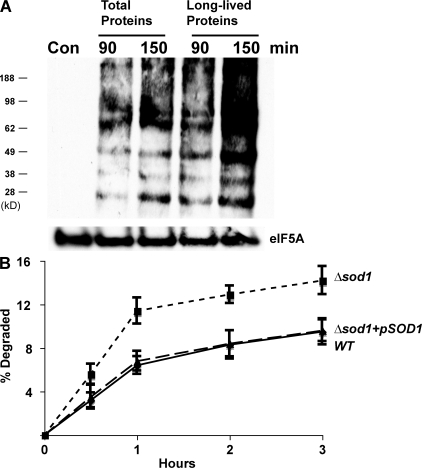Figure 3.
Although long-lived proteins are not degraded more rapidly after exposure to paraquat, they are oxidatively damaged, and a lack of SOD1 also enhances the degradation of recently synthesized proteins. (A) Yeast were grown exponentially, and a portion of cells were treated with cycloheximide for 2 h to allow the degradation of short-lived proteins (the times studied in Fig. 2 A). Both the control and treated cells were then exposed to paraquat for 90 or 150 min. The presence of carbonylated proteins in equal amounts of cell proteins was assayed after derivitization with DNP-hydrazine (DNPH) and then Western blotting with an anti–DNP-hydrazone antibody. A control lane without the treatments with DNPH and paraquat is included to show the specificity of the antibody. Equal loading of lanes was shown with an eIF5A antibody. (B) WT, Δsod1 mutant, and the Δsod1 mutant expressing SOD1 from a plasmid were labeled with 35S-Met for 5 min at 30°C. Rates of protein degradation were measured at 30°C as in Fig. 1 A.

